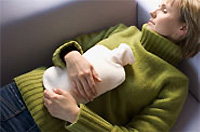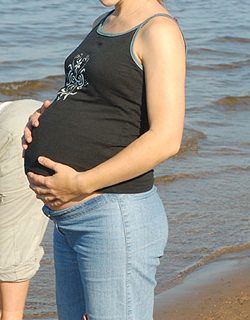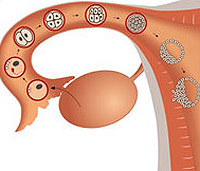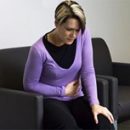Pelvioperitonitis is a formidable complication of inflammatory diseases of female genital organs, abortion, childbirth, cesarean sections. In case of untimely treatment, it can lead to death. Read more about the disease in the article.
Content
The term itself occurred as a derivative from Latin Pelvis, meaning «pelvis» and peritonitis, as the inflammatory process in the peritoneum - shell, lining belly from the inside. Accordingly, Pelvioperitonitis is inflammation of the peritoneum, located inside the pelvis.
The reasons for pelvioperitonitis are most often traumamized by organs located in Taza, mainly female genital organs. Most often, the pelvioperitonitis occurs after childbirth or abortion, but inflammation of the uterus or its appendages can also cause it, including those caused by the hypoint. In this case, bacteria fall into pelvis through lymphatic vessels or uterine pipes.
Signs and diagnostics of pelvioperitonitis
 Symptoms of pelvioperitonitis are usually expressed significantly. The disease begins with increasing temperature, accompanied by chills and vomiting. The frequency of the pulse rises, the pains begin with the abdomen, the tongue becomes dry and climbing. There is a stool delay or on the contrary, diarrhea begins. The stomach swells, and when darling strong pains manifest.
Symptoms of pelvioperitonitis are usually expressed significantly. The disease begins with increasing temperature, accompanied by chills and vomiting. The frequency of the pulse rises, the pains begin with the abdomen, the tongue becomes dry and climbing. There is a stool delay or on the contrary, diarrhea begins. The stomach swells, and when darling strong pains manifest.
Sometimes temporary improvement occurs when the pulse becomes normal, the language becomes wet, and nausea disappears. However, most often follows the new exacerbation of the disease.
Only a doctor can put a final diagnosis, and in some cases an ultrasound study is required and laparoscopy (inspection of the abdominal cavity from the inside using a special tool).
Treatment of Pilvioperitonitis
If any suspicion of illness appears, urgent hospitalization is required. It is not recommended to use any painkillers, since the signs of the disease may distort and it will make it difficult for diagnosis. To reduce the suffering of the patient, local cooling with ice bubble is used.
In any case, hospitalization is needed in compliance with the bed regime, and the treatment itself is conducted by antibiotics individually, depending on which microorganism caused inflammation. At the same time, vitamins, painkillers and lining drugs are introduced, and a special diet is prescribed. If drug treatment does not succeed, and the patient's condition deteriorates, resort to surgical operation. Typically correct and timely treatment of pilvioperitonitis leads to complete recovery.
The basis of the prevention of Pelvioperitonitis is its early detection, as well as timely treatment of other gynecological diseases and complications associated with childbirth and abortions.









